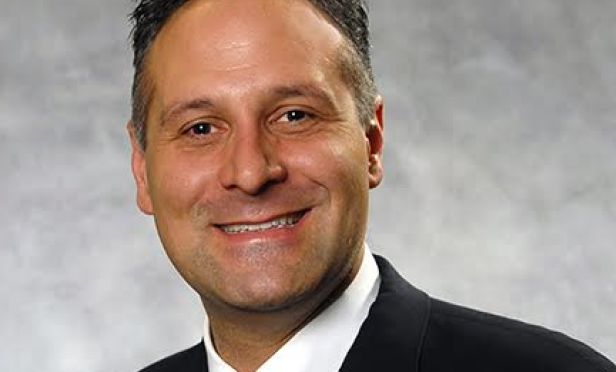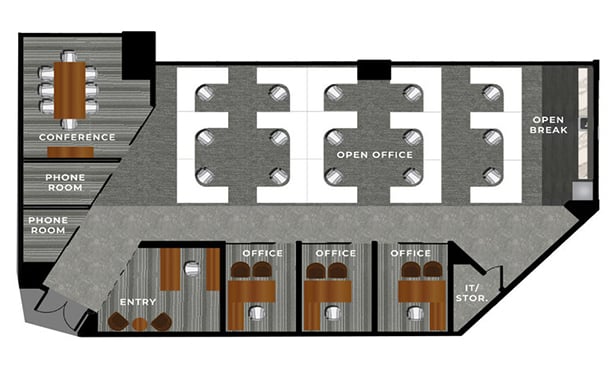
MIAMI—With dozens of projects underway in Florida's key markets, Skanska USA is the state's largest construction and engineering firm. Skanska focuses on the healthcare, higher education, municipal and infrastructure sectors—making the firm a good bellwether for statewide demographic and economic trends. Current projects include the expansion of Tampa International Airport, the redevelopment of the St. Petersburg Pier, construction of the Patricia and Phillip Frost Museum of Science in Miami, and the expansion of Shands Hospital in Gainesville.
A recent report by the Associated General Contractors found that 68% of Florida construction firms are having difficulty hiring skilled employees, a finding that's raising the stakes for the industry and companies in the real estate space. GlobeSt.com caught up with Skanska USA's executive vice president and general manager for Florida, Fred Hames, to discuss the impacts of this labor shortage and how Skanska is getting creative when it comes to recruiting talent.
GlobeSt.com: How is the skilled labor shortage impacting construction in Florida?
Hames: Florida's construction sector has been incredibly active in recent years as demand for commercial development, public-sector projects and infrastructure upgrades rises. The skilled labor pool hasn't kept up with this demand coming out of the recession, which saw many people exit the industry as construction activity slowed.
This gap has put added emphasis on employee development at construction firms, as well as recruitment from markets outside Florida. The good news is that our state is home to a strong pipeline of quality projects, putting us in a better spot than many markets nationwide when it comes to attracting talent. The key to closing the gap is focusing on vocational education and employee development.
GlobeSt.com: How is Skanska maintaining a competitive edge when competing for talent?
Hames: We know from experience that people in our industry are drawn to companies that are stable, guided by a clear set of corporate values, and which offer a sophisticated work environment that emphasizes new technology and collaboration. We also find that many skilled employees are in search of careers that open the door to a diverse set of projects over the long-term—as opposed to a short-term position on a single project—which gives a global firm like Skanska a built-in advantage. On a practical level, we identify talent by investing a great deal of time building relationships in our communities and making inroads with local schools and training programs.

MIAMI—With dozens of projects underway in Florida's key markets, Skanska USA is the state's largest construction and engineering firm. Skanska focuses on the healthcare, higher education, municipal and infrastructure sectors—making the firm a good bellwether for statewide demographic and economic trends. Current projects include the expansion of Tampa International Airport, the redevelopment of the St. Petersburg Pier, construction of the Patricia and Phillip Frost Museum of Science in Miami, and the expansion of Shands Hospital in Gainesville.
A recent report by the Associated General Contractors found that 68% of Florida construction firms are having difficulty hiring skilled employees, a finding that's raising the stakes for the industry and companies in the real estate space. GlobeSt.com caught up with Skanska USA's executive vice president and general manager for Florida, Fred Hames, to discuss the impacts of this labor shortage and how Skanska is getting creative when it comes to recruiting talent.
GlobeSt.com: How is the skilled labor shortage impacting construction in Florida?
Hames: Florida's construction sector has been incredibly active in recent years as demand for commercial development, public-sector projects and infrastructure upgrades rises. The skilled labor pool hasn't kept up with this demand coming out of the recession, which saw many people exit the industry as construction activity slowed.
This gap has put added emphasis on employee development at construction firms, as well as recruitment from markets outside Florida. The good news is that our state is home to a strong pipeline of quality projects, putting us in a better spot than many markets nationwide when it comes to attracting talent. The key to closing the gap is focusing on vocational education and employee development.
GlobeSt.com: How is Skanska maintaining a competitive edge when competing for talent?
Hames: We know from experience that people in our industry are drawn to companies that are stable, guided by a clear set of corporate values, and which offer a sophisticated work environment that emphasizes new technology and collaboration. We also find that many skilled employees are in search of careers that open the door to a diverse set of projects over the long-term—as opposed to a short-term position on a single project—which gives a global firm like Skanska a built-in advantage. On a practical level, we identify talent by investing a great deal of time building relationships in our communities and making inroads with local schools and training programs.
Want to continue reading?
Become a Free ALM Digital Reader.
Once you are an ALM Digital Member, you’ll receive:
- Breaking commercial real estate news and analysis, on-site and via our newsletters and custom alerts
- Educational webcasts, white papers, and ebooks from industry thought leaders
- Critical coverage of the property casualty insurance and financial advisory markets on our other ALM sites, PropertyCasualty360 and ThinkAdvisor
Already have an account? Sign In Now
*May exclude premium content© 2025 ALM Global, LLC, All Rights Reserved. Request academic re-use from www.copyright.com. All other uses, submit a request to [email protected]. For more information visit Asset & Logo Licensing.








